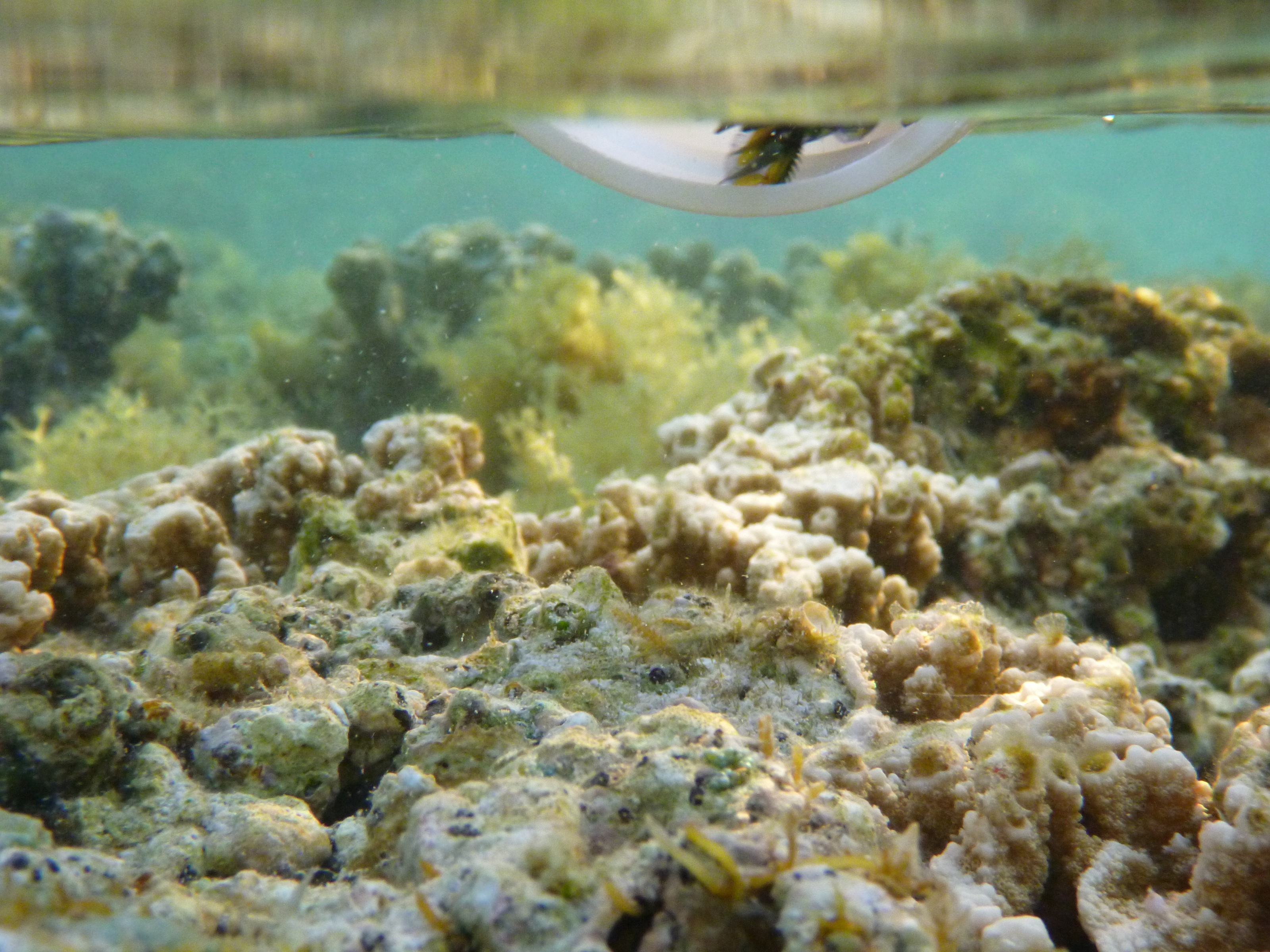Conservation & Threats
Stomatopods are typically found living in areas exposed to local and unpredictably catastrophes as shallow marine waters in the intertidal zone. These areas represent a risk of massive reef kill (Reaka 1980) in which stomatopods are susceptible to local population crashes. A study described an event that some series of storms and a rainfall has decimated a habitat once abundant with stomatopods (Reaka 1980). Therefore these animals are vulnerable to weather phenomenon.
However, although mantis shrimps can be impaired by natural events, the main threat affecting such individuals is harvesting for aquarium purposes as the increasing appreciation of these amazing animals is making people to collect and buy them more and more. Thus, if you appreciate and like the stomatopods let them free.
The specimen used in this study was kept in good condition for 3 days and then released in the coral reef during the low tide period.

Image 1: Release of Gonodactylus smithii after the survey in Heron island.

Image 2: Underwater view of the liberation of G. smithii in the coral rubble.

Image 3: Free stomatopoda.
|